What Is Bevel Work and Why Is It Crucial in Engineering
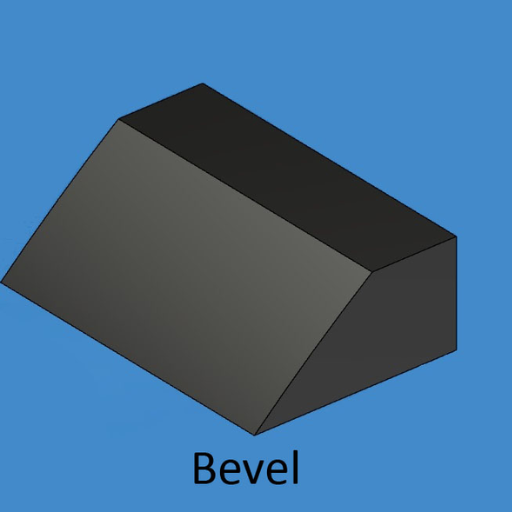
Image source: https://www.sansmachining.com/
Understanding the Basics of Bevel
Bevels are classified according to their shape, angle, and application. The most prevalent kinds of bevels include V-bevels, X-bevels, J-bevels and U-bevels. These designations refer to the shape of the bevel when viewed from a side.
Key Technical Parameters Involved in Bevel Work
- Angle of Bevel: This is the inclination between the beveled surface and the original plane. Its values could range from 15° to 45° with 37.5° been used mostly for weld preparations for better penetration and strength.
- Bevel Width: This measures the distance from edge to where beveling starts. The width of beveled head is very important in determining how much material will be removed; thereby affecting structural integrity as well as fitting joined components together.
- Root Face: The small unbeveled part at the base of a slope commonly known as land. It is significant in welding applications since it gives room for initial weld pass usually between 1-5mm depending on thickness of materials.
- Depth of Bevel: Vertical height from surface to termination point of bezel.Some precision’s work demands this depth should be carefully measured and controlled so that there can always have consistent and operational beeveles.
- Material Type: Different materials may require specific types of bevelling techniques and parameters For instance, when compared to aluminum or plastic, one has different approaches or considerations while doing steel bevelling because each material acts differently under stress as well as heat during this process.
The Importance of Bevel in Modern Engineering
Different Applications of Bevel Work
Types of Bevel Designs and Their Applications
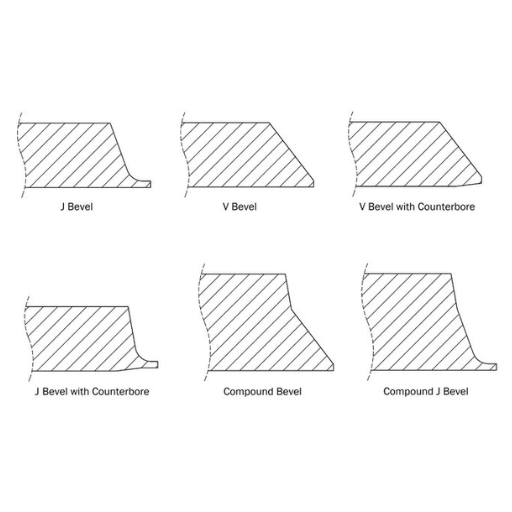
Many bevel designs are available, each of which meets specific applications and industries. These are:
- Single Bevel: It is a common bevel design with an angled edge on one side of a material. It is used widely in welding and pipe manufacturing to create strong and accurate joints.
- Double Bevel: This involves bevelling both sides of a material, often done in thicker materials where single bevel may not be adequate. It ensures that there is better alignment and distribution of the welding metal thus making it appropriate for heavy duty construction and structural applications.
- V-Bevel: Named after its v-shape, this type of beveling is ideal for welding purposes requiring deep penetration and maximum fusion. It is employed in most pressure vessels as well as piping systems.
- J-Bevel: This is a distinctive design that entails one side being more heavily beveled than the other, culminating into a shape resembling ‘J’. In welding, it has proved invaluable in reducing filler material quantities thus facilitating economy scale projects within the field of construction.
- Tapered Bevel: Tapered bevels are commonly found in woodworking or glass cutting industry because they result into inclined edges that improves both aesthetic value and functionality. These help attain smooth transitions while also providing decorative finishes.
Square vs. Rectangle Bevels: Choosing the Right Shape
The choice between a square or rectangular bevel more often hinges on the application’s specific requirements and desired technical parameters.
Square Bevels
Square Bevels are characterized by all sides sloping evenly making them ideal for applications where symmetry and balance are of considerable importance. They have commonly been employed in:
- Precision Joinery: Ensuring tight, uniform joints in woodworking and cabinetry.
- Metal Welding: Providing a consistent angle for welding seams in structural components.
Technical Parameters:
- Angle: Uniformly distributed, typically 45 degrees.
- Depth: Equal on all sides, usually ranging from 1/8″ to 1/2″.
Rectangle Bevels
Rectangular bevels, also known as “flat bevels,” feature varying angles and depths along their lengthwise edges. They are generally used in:
- Pipe Welding: Offering better surface contact and improved joint strength.
- Glass Cutting: Creating refined edges for aesthetic purposes in architectural applications.
Technical Parameters:
- Angle: Varies along the Length; normally customized for each project accordingly.
- Depth: Different Depths; usually specified in inches or millimeters depending upon thickness of material under consideration.
The Role of Cluster and Panel Bevels in Design
Designs of both functional and aesthetic aspects are quite dependent upon the cluster bevels and panel bevels. Various smaller bevels that have been grouped together make up a cluster bevel, which is commonly used in stained glass windows and doors. By making the final product appear complicated and three-dimensional, intricate patterns can be formed through them.
Panel beveling on the other hand refers to bevelling bigger panels instead of single ones; for instance, kitchen cabinets, furniture works and interior design. It helps to break large surfaces thus adding aesthetics into the view. Stress is also evenly distributed along the sides of the material by use of panel bevels hence contributing to structural integrity.
In summary, cluster bevels suit projects that require ornate detailing while panel ones are best for larger structures where both looks and durability are important. Designers can strike a balance between form and function in their projects by opting for either cluster or panel beveling styles.
The Art of Making the Perfect Bevel: Techniques and Tools
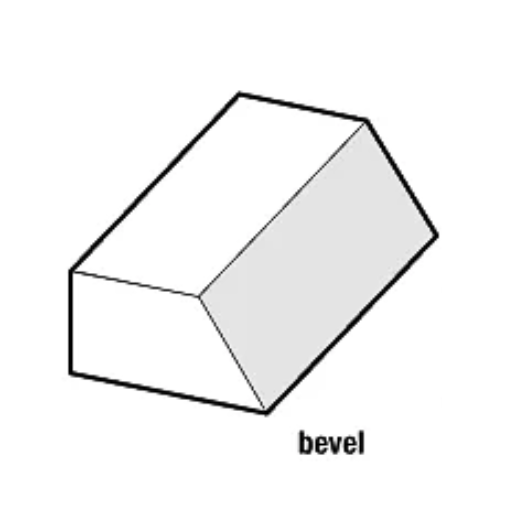
Combining accurate techniques and specialized tools is what makes a perfect bevel. Key methods encompass:
- Marking and Measuring: Precise measuring and marking are important to ensure that the angles and dimensions of the bevel meet the project specifications.
- Cutting: Depending on the material and type of bevel desired, they can be cut using different sets of tools like chisels, saws or routers. Smoothness in cutting may only be attained through pressure consistency as well as an angle uniformity.
- Grinding and Sanding: Grinding wheels or sandpaper might be used to remove any rough edges from the cut sections thereby giving a polished finish to them.
- Consistency Checks: Regularly checking whether our bevel cuts match up with our requirements for dimensions or angles ensures that we end up with similar results
Once combined with proper tooling, these methods allow artisans to create accurate, neat-looking chamfers which add value both technically and visually to their designs.
Selecting the Right Tools for Bevel Cutting
The choice of suitable tools for performing accurate high-quality chamfering is very crucial. Here are some relevant tools along with their technical definitions:
- Bevel Chisels: Usually applied for fine detailed work. Technical parameters: Blade angle (usually 25–30 degrees); blade width (¼”-1”) – handle material (wood/plastic-for strength/gripping).
- Saws (Hand Saws and Powered Saws): Particularly suited for larger structural chamfers. Technical parameters: Tooth count (higher teeth per inch provide smoother finish); blade length (often 8-26 inches), saw type- eg Japanese pull saw for delicate cuts, circular saw for heavy duty ones.
- Routers: Complex or shaped chamfers require this tool. Technical parameters: Router bit type-customizable angles; RPM-varies based on material; base type-fixed/ plunge router depending on precision needs.
- Grinding Wheels and Sandpaper: They are both used in smoothing the edges of chamfering. Technical parameters: Grit size (40-60 about for initial smoothing, 100-120 for finish); wheel diameter (4-8 inches typically for grinding wheels), sandpaper material-aluminium oxide-metal, silicon carbide-glass/ceramics.
- Angle Gauges: To make sure that the bevel angles are precise. Technical parameters: Measurement range (0 – 360 degrees), resolution (0.1 – 1 degree) and display type-analog/digital-to facilitate reading.
Step-by-Step Guide to a Precise Bevel Cut
- Choose the Right Tool for the Job: Depending on the material at hand and bevel requirement, choose an appropriate tool such as chisels that are good at finer details, handsaws that can do larger cuttings or routers which make intricate patterns.
- Measure and Mark the Bevel: Employ the use of an angle gauge to set the preferred angle. When you want to create a beveled cut measure and mark your material with great care. The lines should look sharp and accurate.
- Secure the Material: Clamp it down firmly onto your work bench or a stable platform so that it doesn’t move when cutting. This ensures no movement of materials during cuts making very clean and precise cuts.
- Set and Test the Tool: Adjust tool settings according to technical parameters mentioned before; e.g. fix blade angles in powered saws or adjust router bits. Use scrap material to perform test cuttings to confirm if settings are appropriate for right cuts.
- Make the Cut: Gently but steadily guide your tool along this marked line maintaining equal pressure through out and allowing your tools do all work for you. For manual tools like handsawing, one needs to take note of each stroke’s angle & depth.
- Inspect the Cut: Verify accuracy after cutting is over using an angle gauge for measuring bevel angles; check for any jagged edges or imperfections.
- Finishing Touches: Use grinding wheels or sandpaper to smooth out beveled edges. Begin with coarse grits followed by fine ones for finishing touches. Ensure its touchably smooth as well as project compliant.
Adjustment and Precision: Achieving the Desired Angle
To achieve accuracy when reaching the angle you want to get, there is a need for details and methodical approaches. You can start by using an accurate angle gauge or digital protractor to set and confirm that the right angle has been captured. When dealing with powered tools, ensure that the blade or bit is well positioned and fastened. Before making the final cut, make small adjustments and perform test cuts in junk materials to test whether it is accurate or not. Check on your angles every now and then as you undertake your project so that you can make some fine touches whenever necessary in order to maintain high precision levels. Stable working surfaces and use of suitable clamps can help improve cutting accuracy significantly.
Advantages of Using Bevel Designs in Projects
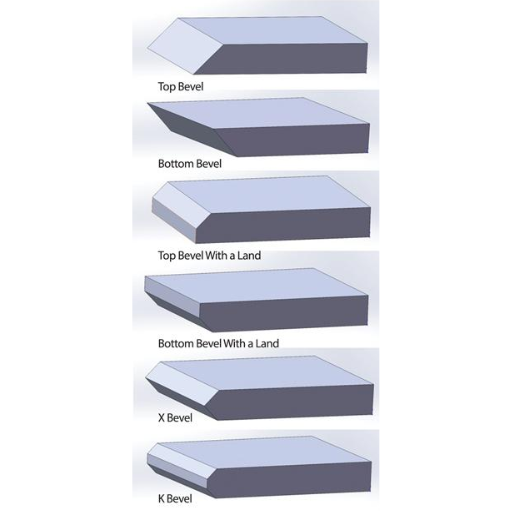
How Bevel Designs Enhance Aesthetic Appeal
Improving Structural Integrity with Bevel Work
The Efficiency and Versatility of Bevel Designs
Common Challenges and Solutions in Bevel Work

In the process of working with bevels, several common challenges are often met. This is mainly about making precise angles without having appropriate tools or skills. By investing in adjustable bevel gauges and practicing measuring angles can improve the level of accuracy. Similarly, clean and smooth cutting is another problem as this may result in poor fitting and ugly joints. The use of good quality cutting equipment that is well maintained, as well as such techniques like continuous blade replacement can make cleaner cuts. Moreover, waste management in terms of material is important since ill-beveled pieces would lead to excess scrap. To minimize waste it’s necessary for an individual to carefully plan and measure before cutting begins. Therefore, by finding appropriate solutions to these challenges, artisans will surely improve the quality and efficiency of their bevel work.
Addressing Common Cutting and Shaping Challenges
These are some of the solutions that one should consider while addressing cutting and shaping issues in bevel work:
- Achieving Precise Angles:
- Solution: Use adjustable bevel gauges plus digital protractors for accurate angle measurements.
- Technical Parameters: Ensure correct calibration of tools and measurement within ±0.1 degree for high precision.
- Ensuring Clean and Smooth Cuts:
- Solution: Employ high-quality cutting equipment like carbide-tipped blades for consistent performance. Regularly maintain and replace blades to avoid imperfections.
- Technical Parameters: Use blades with suitable tooth count levels (e.g., 80 TPI for fine wood cuts) maintaining proper blade alignment to avoid deviations.
- Minimizing Material Waste:
- Solution: Plan cuts meticulously and measure materials accurately before beveling using CAD software for precise layout designs.
- Technical Parameters: Target measurement accuracy within a millimeter also considering material expansion / contraction effects during cut-planning stage.
Finding Solutions for Bevel Work in Complex Projects
Complex projects often have unique beveling challenges which require a mix of advanced methods and accurate planning. Here are some answers drawn from the top online sources:
- Utilizing Advanced Tools and Technology:
- Solution: Purchase CNC machines or sophisticated beveling systems that offer automated accuracy and uniformity. These machines can cut complex angles and shapes with minimal human input.
- Technical Parameters: Make sure your machines are equipped with the most up-to-date software updates and calibration tools to keep their accuracies within the tolerances specified for them.
- Implementing Robust Project Management Practices:
- Solution: Develop comprehensive project plans that include step-by-step beveling instructions and resource allocations. Use project management software to track progress and adjust plans on the fly.
- Technical Parameters: Keep in regular contact with your team members as well as stakeholders so that everyone is in agreement regarding the objectives and timelines of a project.
- Leveraging Expert Knowledge and Collaboration:
- Solution: Build up a team of skilled craftsmen coupled with engineers who have specialized knowledge in bevel work. Consider hiring external specialists or consulting industry experts for specialist areas that may pose difficulties.
- Technical Parameters: Foster knowledge sharing amongst team members for innovative solutions to overcome teething technical problems.
Tips for Maintenance and Care of Beveled Edges
For beveled edges to survive longer lifespan and not to lose their beauty, they need to be properly maintained. Here are some hints:
- Regular Cleaning: Using a soft cloth or sponge soaked in warm soapy water, wipe over beveled edges consistently keeping away from harsh cleaners that may destroy the surfaces through scratching.
- Inspection: Conduct intermittent review of the edge to identify any chipping, cracking or show of wear. This will make it possible for you attend to early damages and stop further deterioration.
- Sealing: Think of using a sealant on countertops and similar surfaces with beveled edges. Should suit the material used to make the edges
- Avoid Harsh Chemicals: Do not use corrosive substances or acidic liquids which can corrode or discolor the beveled edge. Always restrict yourself to neutral-cleaning agents based on PH.
- Handle with Care: Ensure that heavy objects do not come into contact with your beveled edge as they may chip off or break. Protective pads can as well be positioned in order to have them cushioned whenever required.
How to Select and Order the Perfect Bevel for Your Needs
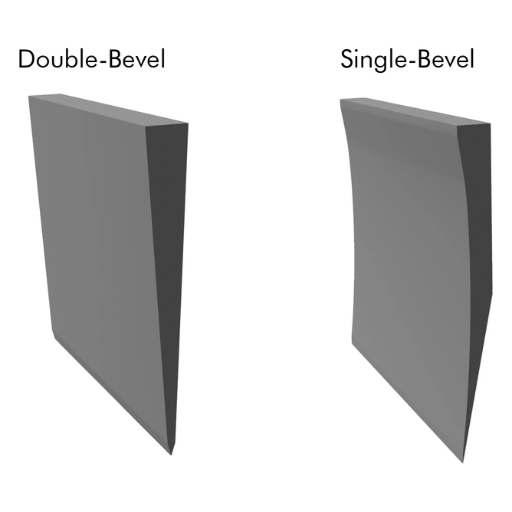
In order to choose and arrange an appropriate bevel for the job, there are a few essential processes. First, you have to consider the material so that you can determine which type of bevel it requires in order to produce the best results. You should take measurements so as to confirm that the bevel will fit properly in this space. This includes finding out about different bevel styles such as flat, double or half-bevels and deciding on what suits your requirements creatively and practically.
Ask any expert or manufacturer if this is what you really need before confirming everything. Finally settle on a well-known supplier whose specifications will guarantee precise completion of tasks at hand once you place an order with them. Also remember to know how long it takes for them to deliver and return policies just incase things don’t work out well during purchasing. This way, selecting and ordering your ideal bevel would not seem like a problem.
Understanding Your Project Needs: A Guide to Selection
With respect to your project, here are the relevant factors and corresponding technical specifications that you should consider:
- Material Compatibility: Make sure that the bevel you choose is compatible with the material. Glass, wood, stone and metal are some of the common materials whose use in beveling requires specific types.
- Glass: Flat or polished bevels are generally used.
- Wood: Chamfered or rounded bevels are often preferred.
- Stone: Double bevels or bullnose edges work well.
- Metal: Machined or precision bevels are ideal.
- Dimension Accuracy: Take measurements of exact dimensions of the area to which a bevel will apply. To fit perfectly, take accurate measurements using tools such as calipers and micrometers to ensure seamless fit.
- Thickness: Account for the thickness of the material as this will influence bevel depth.
- Length and Width: Ensure the bevel proportionally fits the edges.
- Bevel Angle: Find out what angle needs to make a perfect edge. Although the most common angles include 30°, 45° and 60°, this may not always hold true depending on design requirements of a given undertaking.
- 30°: Provides a subtle finish, suitable for decorative purposes.
- 45°: Most commonly used for a balanced look and functionality.
- 60°: Typically used for specialized or heavy-duty applications.
- Aesthetic and Functional Requirements: Analyze the desired look and functionality of the bevel.
- Aesthetic: Decorations can include flat/half/double Bevils .
- Functionality: COther properties such as anti-slipperiness, wear-resistance and maintenance convenience among others need to also determine our choice right from now onwards before we mount any particular bevelling in our homes/offices etcetera.
- Professional Consultation: Also seek advice from a professional or beveling supplier to verify if it is in accordance with your project’s technical needs. They will point out any other additional information required or adjustments henceforth.
Reference sources
-
WayKen – What is a Bevel (Beveling) in Engineering
- WayKen delivers a detailed explanation of beveling as an essential machining operation. The article covers different parameters, uses, and the impact of beveling on engineering design and manufacturing.
- Source: WayKen
-
Canadian Metalworking – How to Bevel Cut Thick Plate
- This article focuses on the preparation and techniques required for bevel cutting thick plates, providing practical advice and best practices. It highlights the importance of system accuracy and operator skill in achieving precise bevel cuts.
- Source: Canadian Metalworking
-
MadeAria – Bevel (Beveling): Definition, Types, Benefits & Limitations
- MadeAria offers a comprehensive overview of beveling, detailing its definition, types, benefits, and limitations. This resource is useful for understanding how beveling fits into the broader context of engineering and manufacturing processes.
- Source: MadeAria
Frequently Asked Questions (FAQs)
Q: What is the core action of bevel work in engineering?
A: The core action of bevel work in engineering involves cutting a sloped surface or an edge that is not perpendicular to the top of the material. This is crucial in various applications, from facilitating tight-fitting joints in construction to creating decorative angles in the glass.
Q: What should one look for when selecting a shop for bevel work services?
A: When selecting a shop for bevel work services, it’s important to consider their expertise, the range of services they offer, the quality of their past work, and their ability to work with your specific material and design needs. Contact us or visit options can help you get a feel for their level of customer service and the variety of stock they have on hand.
Q: Why is the precision of bevel work important in engineering and art?
A: Precision in bevel work is vital because it directly affects the fit, appearance, and functionality of the final product. In engineering, a precise bevel can mean the difference between a secure joint and a potential failure point. In art, particularly in pieces like stained glass, precision affects both the aesthetic appeal and structural stability.
Q: How has the integration of technology impacted bevel work?
A: Technology has significantly enhanced bevel work through the introduction of CNC machines, water jet cutters, and laser cutters, allowing for extreme precision, efficient reproduction of intricate designs, and the ability to work on a broader range of materials and thicknesses. This has opened up new ways to incorporate beveled edges into both functional and decorative pieces.
Q: What options exist for individuals looking to learn bevel work?
A: Individuals interested in learning bevel work have various options, including workshops, community college courses, apprenticeships in shops, and online tutorials. Hands-on experience is invaluable, so finding a local shop that offers classes or seeking out a mentor in the field can be a great way to get started.
Q: How can someone stay informed about the latest tools and techniques in bevel work?
A: Staying informed about the latest tools and techniques in bevel work can be achieved by subscribing to trade magazines, joining professional associations, attending trade shows and workshops, and participating in online forums dedicated to bevel work and engineering. These resources can offer valuable insights into new technology and evolving methodologies in the field.








